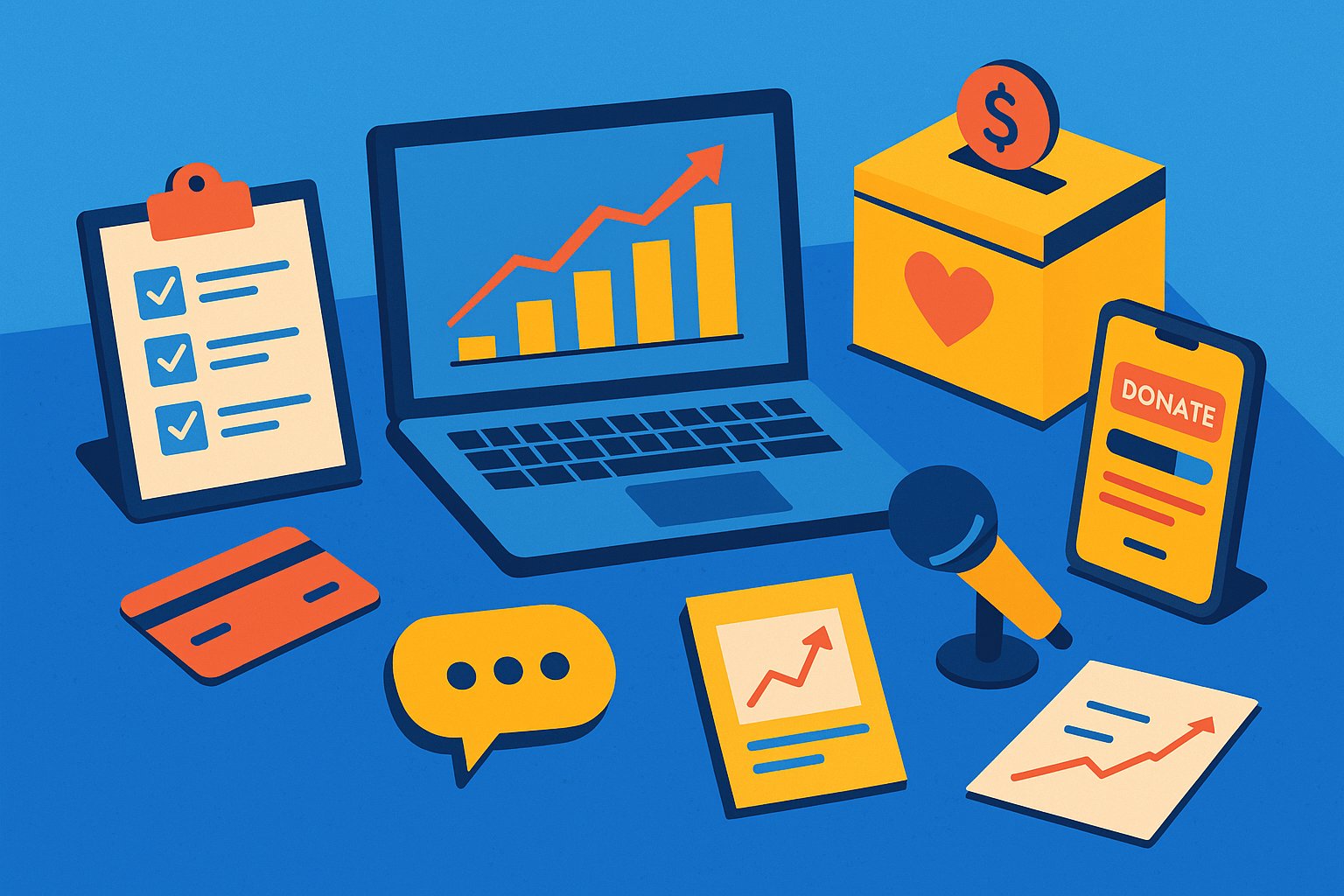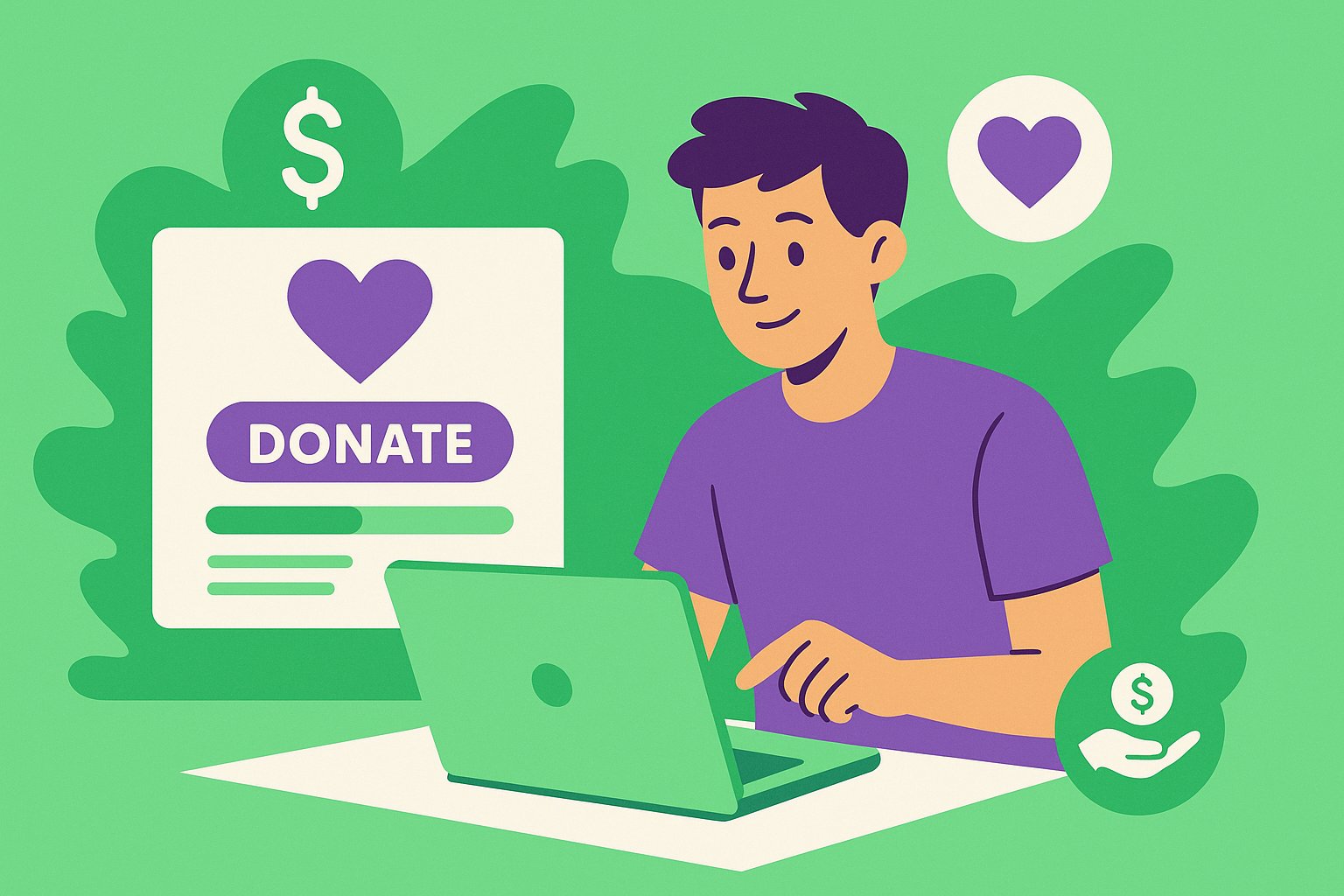Choosing Your Crowdfunding Platform with Confidence
When embarking on a donation-based crowdfunding journey, the foundation of your campaign rests on the platform you select. A reliable platform not only streamlines donations but also serves as your storefront—where potential supporters first encounter your story. Options such as GoFundMe, Givebutter, and Donorbox have become cornerstones for creators seeking to solicit tax-deductible contributions with minimal friction. As you compare platforms, consider fee structures, ease of use, and integration capabilities. Does the platform process payments securely through reputable gateways like Stripe or PayPal? Can you customize your page with branding elements and compelling multimedia? Is there built-in support for recurring donations, enabling long-term sustainability? By choosing a platform that aligns with your organizational needs, you lay the groundwork for an efficient, trustworthy campaign that invites generosity from day one.
Securing Payments: Streamlined Donation Processing
Beyond the crowdfunding stage, the tools you use to process transactions are central to donor confidence. Payment processing services such as Stripe, PayPal, or Square enable creators to accept credit cards, digital wallets, and ACH transfers with ease. These services often feature instant notifications, so you know the moment a donation arrives, enabling timely thank-you messages. Look for processors that offer seamless integration with your chosen crowdfunding platform—this reduces manual data transfers and minimizes errors. Additionally, ensure that you can offer donors the option to cover processing fees, which can safeguard your campaign’s net revenue. A donation form embedded on your website or campaign page that dynamically calculates totals, taxes, and fees fosters transparency, eliminating last-minute surprises for donors. When backers see a clear, secure payment flow, they’re more likely to contribute without hesitation, helping you reach—and even exceed—your financial goals.
Building Relationships: Donor Management and CRM Solutions
As your donor base grows, so does the complexity of maintaining meaningful connections. Expectations extend beyond a simple “thank you” email; supporters crave transparency, updates, and the opportunity to deepen their engagement. This is where donor management systems (often referred to as CRMs) such as Bloomerang, DonorPerfect, or Little Green Light become invaluable. These platforms aggregate donor data—contribution history, contact preferences, and engagement metrics—into a centralized dashboard, enabling you to personalize outreach and steward relationships more effectively. Automated workflows can be set up to trigger tailored thank-you messages, segment donors for targeted campaigns, and track donor retention rates over time. By harnessing a CRM designed for nonprofits, you transform anonymous contributions into identifiable supporters, empowering you to cultivate loyalty and encourage repeat giving. In a world saturated with digital appeals, these tools allow you to stand out by treating each donor as a valued partner rather than a faceless transaction.
Telling Your Story Visually: Graphic Design and Video Tools
A compelling narrative is at the heart of every donation campaign, but visuals elevate that narrative to a memorable experience. Graphic design tools like Canva and Adobe Spark simplify the creation of eye-catching banners, social media posts, and infographics, even for those with minimal design expertise. With customizable templates, you can brand your campaign consistently—ensuring that your mission’s colors, fonts, and ethos resonate across every channel. Video editing platforms such as Adobe Premiere Rush or iMovie enable you to compile heartfelt testimonials, project updates, and behind-the-scenes footage into polished clips. Short videos that reveal beneficiaries’ stories, showcase volunteer efforts, or illustrate project milestones can drastically increase engagement by offering an immersive glimpse into your mission. When donors see authentic faces and hear candid voices, the emotional connection deepens, motivating them to share your campaign with their own communities. By investing in user-friendly design and video tools, you give your story an unforgettable visual identity that stands out in crowded social feeds.
Automating Communication: Email Marketing Platforms
Email remains one of the most reliable channels for nurturing donor relationships and keeping supporters informed. Platforms like Mailchimp, Constant Contact, or Sendinblue allow you to craft professional-looking newsletters, segment your audience based on giving levels or engagement patterns, and schedule updates automatically. Whether you’re announcing key milestones—such as reaching 50 percent of your funding goal—or sharing a volunteer spotlight, email marketing tools help you stay top-of-mind without manual intervention. Features like A/B testing subject lines, analyzing open and click-through rates, and integrating donation forms directly within the email body drive measurable results. Perhaps most importantly, these platforms help you personalize messages: greet donors by name, reference their prior contributions, and highlight how their funds have made a tangible difference. By weaving automated yet authentic communications into your routine, you foster a sense of community and transparency that encourages ongoing generosity.
Engaging Supporters: Social Media Management Solutions
A strong social media presence amplifies your campaign’s reach exponentially, but managing multiple channels can quickly become overwhelming. Social media management tools like Hootsuite, Buffer, or Later streamline the process by enabling you to schedule posts, monitor engagement, and analyze performance from a unified dashboard. Craft a posting calendar that balances emotional storytelling, progress updates, and calls to action—such as “Help us reach our next milestone” or “Share this post to spread the word.” Use these tools to identify optimal posting times for each platform, ensuring your message lands when followers are most active. Additionally, social listening features can alert you when supporters tag your campaign, enabling swift replies that reinforce trust. Whether you’re posting a heartfelt beneficiary story on Facebook, a behind-the-scenes photo on Instagram, or a concise update on Twitter, consistency is key. By automating and organizing your social media efforts, you maintain an engaging presence without sacrificing valuable time you could spend on core mission activities.
Measuring Impact: Analytics and Tracking Tools
Data-driven decision-making is crucial for maximizing your campaign’s potential. Analytics tools—such as Google Analytics for your website and platform-specific dashboards for your crowdfunding page—provide real-time insights into donor behavior, traffic sources, and conversion rates. By understanding which channels drive the most donations, you can allocate resources more effectively: perhaps a surge of referrals from a local community blog warrants deeper outreach, or a spike in email click-throughs indicates an especially compelling subject line. Tools like UTM builders help you tag each link, allowing granular tracking of which social posts, newsletters, or external articles generate traffic and donations. For a holistic view, consider integrating all these data streams into a centralized reporting tool like Databox or Microsoft Power BI, where you can visualize progress toward goals, monitor trends over time, and set automated alerts for key performance indicators. When you can pinpoint exactly which tactics resonate—and which fall flat—you refine your strategy on the fly, turbocharging your campaign’s growth and ensuring donors feel seen through relevant, targeted outreach.
Ensuring Transparency: Reporting and Accounting Software
Nothing undermines donor confidence like a lack of clarity around finances. Reporting and accounting tools specialized for nonprofits—such as QuickBooks Online for Nonprofits, Xero, or Aplos—help maintain meticulous records of every donation, expense, and payout. These systems allow you to generate financial statements, profit-and-loss reports, and donor receipts with ease, ensuring donors receive timely documentation for tax purposes. Beyond compliance, such software lets you publicly demonstrate how funds are allocated: a downloadable PDF report on your campaign page can detail program expenses, administrative costs, and project outcomes. By making these reports easily accessible, you reassure donors that their generosity is stewarded responsibly. Additionally, accounting integrations with your CRM can automate reconciliation, reducing manual errors and freeing your team to focus on mission-critical tasks. When creators use robust financial tools to uphold transparency, donors feel confident their contributions are making real, measurable impact.
Fostering Engagement: Livestreaming and Virtual Event Platforms
In a world where face-to-face gatherings may be limited, livestreaming and virtual event platforms offer an invaluable way to connect donors with the heart of your campaign. Tools such as Zoom, Crowdcast, or StreamYard enable you to host live Q&A sessions, virtual tours of your project site, or donor appreciation events without geographic barriers. Scheduling a monthly “behind-the-scenes” livestream—where you answer burning questions, showcase recent successes, and highlight immediate needs—establishes a real-time feedback loop with supporters. Virtual event platforms also support interactive features like polls, chat rooms, and breakout sessions, allowing donors to feel genuinely involved in decision-making processes. At the conclusion of each event, record and archive the session, embedding the video link on your campaign page or YouTube channel for those who missed the live broadcast. By leveraging livestreaming tools, you humanize your mission, creating memorable experiences that reinforce trust and deepen emotional investment.
Streamlining Collaboration: Project Management Systems
Behind every successful donation campaign lies a well-coordinated team, often juggling roles from content creation to donor relations. Project management platforms such as Trello, Asana, or Monday.com streamline collaboration by providing a centralized workspace to assign tasks, set deadlines, and track progress. For instance, you can create boards dedicated to content creation—where copywriters draft messages and designers upload visuals—or boards focused on outreach—where email campaigns and social media posts are scheduled. By assigning clear owners and due dates, everyone on your team knows exactly who is responsible for each deliverable. Collaboration features like file attachments, comment threads, and real-time notifications ensure that no message falls through the cracks. When your team operates in sync, donors experience a cohesive narrative and consistent communication, reinforcing the impression of a well-run, trustworthy campaign.
Gathering Feedback: Survey and Polling Applications
Donors appreciate knowing their opinions matter. Utilizing survey and polling tools—such as Google Forms, SurveyMonkey, or Typeform—empowers you to collect feedback on donor motivations, campaign messaging, and preferred communication channels. For example, a brief post-donation survey can ask supporters which aspects of your narrative resonated most or gauge interest in recurring giving opportunities. Periodic polls on social media can prompt donors to vote on next steps: would they prefer an update on financial breakdowns or a behind-the-scenes project tour? When you openly solicit and act on donor input, you demonstrate that your campaign is a collaborative endeavor rather than a one-sided plea for funds. These feedback loops not only generate valuable insights but also reinforce donor agency, deepening their emotional stake in your mission’s success.
Safeguarding Data: Privacy and Security Solutions
Maintaining donor trust extends beyond transparency; it includes safeguarding sensitive personal information. Implementing data security tools such as SSL certificates for your campaign landing page, two-factor authentication for backend access, and GDPR-compliant data collection practices ensures that donor information remains confidential and protected. Platforms like OneLogin or LastPass help your team manage secure password storage and access controls, reducing the risk of unauthorized breaches. When accepting payments, ensure your payment processor is PCI DSS compliant—a standard that governs the secure handling of credit card information. Clearly articulate your privacy policy in accessible language, so donors understand how their data will be used, stored, and protected. By proactively addressing security and privacy concerns, you foster donor confidence, reassuring them that your campaign treats their personal information with the same care as you treat their financial contributions.
Expanding Your Network: Integration and Partnership Tools
No creator succeeds entirely in isolation. Strategic integrations with external partners—such as nonprofit coalitions, local businesses, or matching grant providers—can amplify your reach and credibility. Tools like Zapier allow you to connect disparate applications—linking your crowdfunding platform to your email marketing, CRM, or social media channels—automating workflows that would otherwise require manual effort. For instance, a new donation can trigger an automated email sequence welcoming the donor, adding them to your CRM, and notifying your social media manager for potential donor highlights. Partnerships with established organizations can provide matching funds, doubling donor impact during special campaigns. Leveraging integrated networks and automation tools not only saves time but also expands your campaign’s ecosystem, fostering a collaborative environment where donors see the broader support community rallying behind your cause.
Planning for Post-Campaign Success: Continuity and Sustainability
When the dust settles and your donation campaign achieves—or surpasses—its fundraising target, the final critical tool is your strategy for post-campaign engagement. Many platforms, including Donorbox and Givebutter, offer features for recurring donations, enabling supporters to set up monthly gifts that sustain ongoing projects. Email automation can transition one-time donors into long-term supporters by sending personalized follow-up communications: impact reports, volunteer opportunities, or invitations to future virtual events. Integrating your CRM with accounting software ensures seamless reconciliation of funds and accurate disbursement to programmatic needs. Additionally, consider a website widget that highlights ongoing needs, giving your campaign webpage a permanent space for donor contributions. By equipping yourself with tools that encourage sustained involvement and recurring giving, you transform a single campaign into a continuous source of support—a lasting legacy that evolves from one-time donations into enduring partnerships.
Bringing It All Together: Creating a Cohesive Toolkit
Launching and managing a donation-based crowdfunding campaign is a multifaceted endeavor that demands careful selection and coordination of essential tools. By choosing a reliable crowdfunding platform, integrating secure payment processors, and employing donor management systems to nurture relationships, you establish a robust infrastructure that instills confidence from the outset. Complement these foundational elements with graphic design and video editing software to craft compelling narratives, and leverage email marketing and social media management platforms to sustain engagement. Analytics and reporting tools offer data-driven guidance, while project management systems keep your team aligned and efficient. Privacy and security solutions protect donor information, and feedback applications invite active participation from your community. Finally, planning for post-campaign sustainability through recurring donation features and CRM integration ensures your mission’s momentum never stalls. When woven together thoughtfully, these tools form a cohesive toolkit—empowering creators to focus on their mission, knowing they have the resources to build, scale, and sustain an impactful fundraising initiative.




